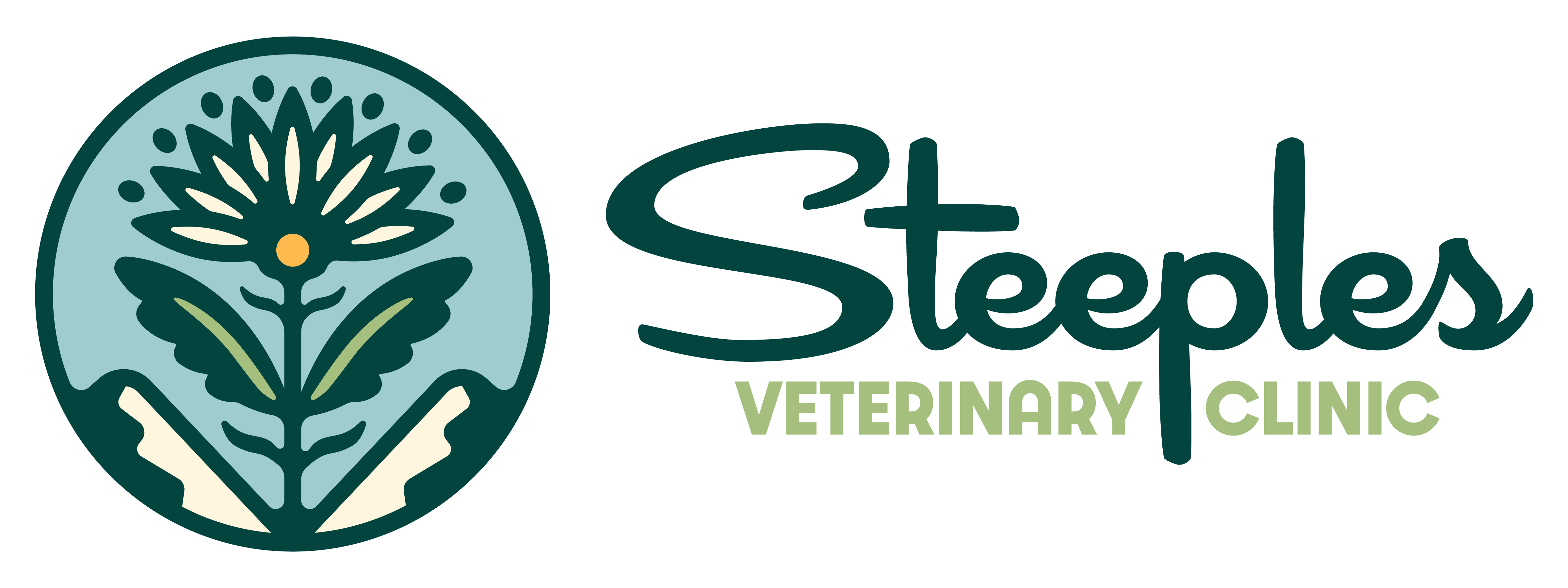Hello, it’s Freddie. Here I am again passing on my knowledge. I wanted to tell you about arthritis in dogs and what can be done about it. Well, and I must confess that I’m a senior cat myself, so I can really relate to this one. Sometimes I just ache all over and hardly feel like jumping up on the counter to catch some sunlight. Let me tell you what I know …
Arthritis in Dogs
Arthritis means inflammation of the joints. It also means stiffness, achiness, and reluctance to get up and go!
Although arthritis can be caused by joint injuries, immune-mediated disease or infections in dogs of any age, we usually associate the most common form, degenerative joint disease, with old age. After a lot of jumping and running and digging and leaping, the joints all over the body can suffer from wear and tear. Commonly the hip joints and the knees (also called stifles) in older dogs give the most grief.
When you start to notice that your formerly bouncy dog has lost a little bounce or starts to take a few tries to get up from a sit, it’s time for a visit to the veterinarian. After a physical exam, the vet may want to take x-rays of the area of concern. That way he or she can determine if this is arthritis or perhaps rule out another bone, muscle, ligament, or tendon problem.
How do we treat dogs with arthritis? I’ve heard the veterinarians around here talk about taking a “multi-modal” approach. That means there isn’t just one magic answer, but the best results come from applying several different treatments:
- Enough exercise. This goes along with keeping the weight down. It also keeps the joints limber and the muscles strong. The problem is, of course, that if you hurt you don’t want to exercise. That’s why this has to be controlled exercise in the form of swimming or light walks. Enough but not too much.
- Lean body weight. Extra body weight puts extra stress on all the joints, and extra stress on painful joints makes you want to use them even less. Being too heavy is just not good, so it’s time for a weight loss program. I’m going to talk about that a whole lot more in a few weeks.
- Nutraceuticals. These types of treatments are not considered to be drugs, but are supplements usually of plant or animal origin that have anti-inflammatory effects and even some protective effects on the joints. You’ve all heard of glucosamine. Other nutraceuticals for arthritis are chondroitin sulphate, MSM, green-lipped muscle, elk velvet antler, shark cartilage, pentosan polyphosphate (also known as Cartrophen, an injectable treatment).
All of the nutraceuticals are helpful to treat arthritis, but most of them take a few weeks use to see a noticeable response. They are generally very safe supplements and very helpful for early arthritis or when used in combination with other treatments.
Diet with supplements. For example, Royal Canin Veterinary Diet makes Mobility Support food, which is coated with green-lipped mussel in such a way that it is very available for digestion. This food is all some dogs need to keep arthritis pain away.
NSAIDs. These are non-steroidal anti-inflammatory drugs. They are the most effective treatment for joint and muscle pain and inflammation and can alleviate discomfort within an hour. They can be given for the long term, but not without some risks.They must be used carefully and as directed, but that being said… a lot of dogs take them with great results.
It is important that your dog has blood tests done before starting NSAIDs for the long term, and then every 6-12 months thereafter. Why? NSAIDs can be harmful to the kidneys and liver if these organs are already failing or starting to have problems. They may not be the best thing for your dog, or they may still be given, just at a lower dose.NSAIDs can also cause stomach ulcers or diarrhea.
Acupuncture and Chiropractic. These treatments must be done by a veterinarian certified in acupuncture or chiropractic techniques in animals.
Therapeutic Class IV Laser. This is a non-invasive treatment with a laser that emits light waves that enhance healing and increase blood flow to injured areas. Usually multiple treatments are needed in a series to gain the full benefits.So when your dog’s eyes are saying “Yes, let’s play!” but his joints are saying, “No, not going to happen,” consider talking to your veterinarian!
You may be wondering, what about cats? Next time, I’ll tell you about cats and arthritis… Yes, we get it too and you might not have even noticed.


Hi:
Mungo is 10 years old. he has had X-rays, which show he has deteriorated spinal discs with spurs on three vertebrae. he is currently being treated with Prednisone, which helps, but Dr Zehnder is concerned about side-effects. he is not in pain, but his back legs seem weak, and he wobbles.
a friend has told me that laser treatments helped her dog….I wondered if Mungo might be a good candidate for this.
I received your comment on Freddie’s Blog and wanted to take a moment to contact you. I reviewed your question with one of the doctors and she thought you may be interested in some of the information we provide our clients with regarding laser treatment. I have attached the documents to this email. In addition, she agreed that Prednisone does have a lot of side effects and she feels there may be other options out there to help Mungo in addition to laser therapy.
Below there is some specific information regarding laser therapy at out clinic.
If you have any questions please do not hesitate to call (250) 489-3451
Therapeutic Laser and Your Pet
Therapeutic Laser treatment (also known as non-thermal or cold laser) is available at Steeples Veterinary Clinic.
What is laser therapy?
Class 4 Laser Therapy is a non-invasive, painless form of treatment with photons of light that are emitted from a probe onto the skin or tissue. The light penetrates deeply into the tissue and stimulates the cells, increases cellular metabolism, and results in increased circulation, an anti-inflammatory effect, relief from pain, and an acceleration of the healing process.
What will a laser treatment session be like for my pet?
Laser therapy is a painless application of healing light. Your animal might feel a slight tingling as the light enters the tissue and cells, but it is very minimal if at all. Many pets will feel almost instant pain relief and reduction in anxiety, making the laser treatment quite enjoyable.
What conditions can laser treat?
The laser treatment can be used on arthritis, hip dysplasia, cruciate ligament injuries, intervertebral disc disease, chronic ear infections, skin wounds, dental extraction sites, hot spots, burn injuries, anal gland disease, and chronic bladder inflammation. It can also treat tendon and ligament injuries and skin disease in horses.
How many treatments are needed?
The number of treatments and the frequency varies with the condition and how long it has been present. Chronic conditions will take longer than more acute conditions. Most conditions will show improvement in 3-4 treatments.
Laser therapy will not help every animal, but it has been proven very effective in clinical studies in rehabilitation of both humans and animals. It is an important tool we can use to improve healing and help give relief of pain in our animal patients.
BIOLOGICAL EFFECTS OF CLASS IV LASER THERAPY
1. ACCELERATED TISSUE REPAIR AND CELL GROWTH. Photons of light from lasers penetrate deeply into tissue and accelerate cellular reproduction and growth. The laser light increases the energy available to the cell so that the cell can take on nutrients faster and get rid of waste products. As a result of exposure to laser light, the cells of tendons, ligaments and muscles are repaired faster.
2. FASTER WOUND HEALING. Laser light stimulates fibroblast development (fibroblasts are the building blocks of collagen, which is predominant in wound healing) in damaged tissue. Collagen is the essential protein required to replace old tissue or to repair tissue injuries. As a result, LT is effective on open wounds, scars, and burns.
3. REDUCED FIBROUS TISSUE FORMATION. LT reduces the formation of scar tissue following tissue damage from cuts, scratches, burns or surgery. Scar tissue is the primary source of chronic pain.
4. ANTI-INFLAMMATION. Laser light has an anti-edema effect as it causes vasodilation, but also because it activates the lymphatic drainage system (drains swollen areas). As a result, there is a reduction in swelling caused by bruising or inflammation.
5. ANTI-PAIN (ANALGESIC). Laser therapy has a high beneficial effect on nerve cells which block pain transmitted by these cells to the brain and which decreases nerve sensitivity. Also, due to less inflammation, there is less edema and less pain. Another pain blocking mechanism involves the production of high levels of pain killing chemicals such as endorphins and enkephalins from the brain and adrenal gland.
6. IMPROVED VASCULAR ACTIVITY. Laser light will significantly increase the formation of new capillaries in damaged tissue that speeds up the healing process, closes wounds quickly and reduces scar tissue. Additional benefits include acceleration of angiogenesis, which causes temporary vasodilatation, an increase in the diameter of blood vessels. More blood flow equals faster healing and less pain.
7. INCREASED METABOLIC ACTIVITY. Laser therapy creates higher outputs of specific enzymes, greater oxygen and food particle loads for blood cells. The damaged cells can repair and regenerate faster.
8. IMPROVED NERVE FUNCTION. Slow recovery of nerve functions in damaged tissue can result in numbness and impaired limbs. Laser light will speed up the process of nerve cell reconnection and increase the amplitude of action potentials to optimize muscle action. Reduce nerve pain.
9. IMMUNOREGULATION. Photons are absorbed by chromophores (molecule enzymes) that react to laser light. The enzyme is activated and starts the production of ATP, which is the major carrier of cell energy and the energy source for all chemical healing reactions in the cells. Long lasting pain relief occurs
10. TRIGGER POINTS AND ACUPUNCTURE POINTS. Laser therapy stimulates muscle trigger points (knots) and acupuncture points on a non-invasive basis providing musculoskeletal pain relief.